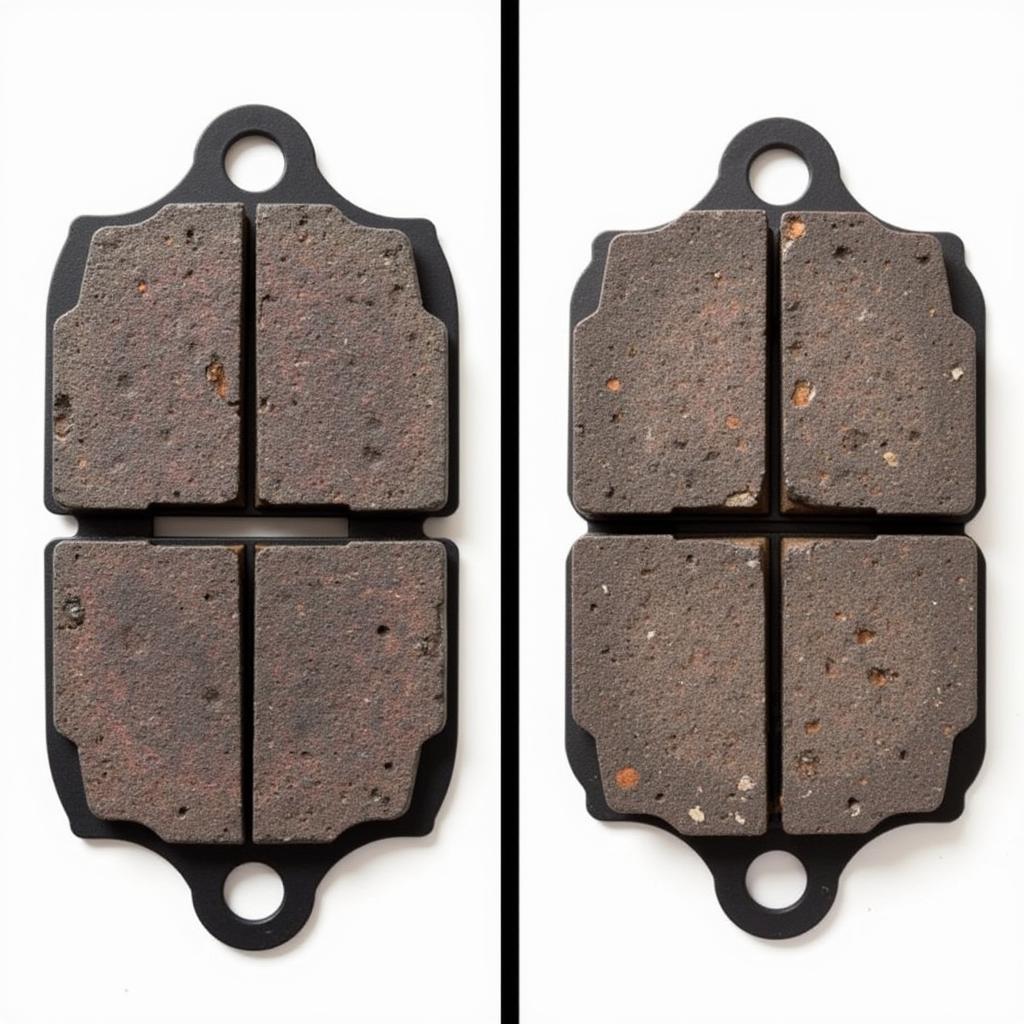The brake warning light on your dashboard is a crucial safety feature, designed to alert you to potential issues within your braking system. Ignoring this warning light could lead to serious consequences, compromising your ability to stop safely. Understanding the common causes behind a glowing brake warning light can help you address the issue promptly and ensure your safety on the road.
Common Culprits Behind a Brake Warning Light
Several factors can trigger the brake warning light. Some are minor and easily fixable, while others signal serious problems requiring immediate attention. Here’s a breakdown:
1. Low Brake Fluid Level
What it Means: Your car needs a certain amount of brake fluid to function properly. If the fluid level drops too low, it often indicates a leak in the system or excessively worn brake pads.
What to Do: Check your brake fluid reservoir. If it’s low, add the recommended brake fluid type for your vehicle. However, simply adding fluid is not a permanent solution. Have your braking system inspected by a mechanic as soon as possible to diagnose and repair any leaks or worn components.
 Low Brake Fluid Reservoir
Low Brake Fluid Reservoir
2. Worn Brake Pads
What it Means: Brake pads are designed to wear down over time. When they become too thin, a sensor (in most modern cars) triggers the brake warning light.
What to Do: If your brake pads are worn, they need to be replaced. Driving with worn brake pads reduces your braking efficiency and can damage the rotors, leading to more costly repairs.
 Worn Brake Pads Comparison
Worn Brake Pads Comparison
3. Faulty Brake Pad Sensor
What it Means: Sometimes the sensor itself that monitors brake pad wear can malfunction, triggering a false warning light.
What to Do: If a mechanic determines the brake pad sensor is faulty, it needs to be replaced. This is a relatively inexpensive repair.
4. Issues with the ABS System
What it Means: If there’s a problem with your Anti-lock Braking System (ABS), like a faulty wheel speed sensor or a problem with the ABS control module, the brake warning light might illuminate.
What to Do: Diagnosing ABS problems requires specialized equipment. Take your vehicle to a qualified mechanic to diagnose and address any issues with the ABS system.
 Car Dashboard with ABS Warning Light
Car Dashboard with ABS Warning Light
5. Brake Master Cylinder Problems
What it Means: The brake master cylinder is responsible for converting the force from your foot on the brake pedal into hydraulic pressure that activates the brakes. If it’s leaking or malfunctioning, it can cause the brake warning light to come on.
What to Do: Problems with the brake master cylinder are serious and require immediate attention. Have your vehicle towed to a mechanic for inspection and repair.
6. Emergency Brake is Engaged
What it Means: It may seem obvious, but sometimes the simplest explanation is the most likely one. If you’ve left your emergency brake partially engaged, it can cause the brake warning light to stay on.
What to Do: Check if your emergency brake is fully released. If the light turns off, you’ve solved the problem. If it remains illuminated, further investigation is needed.
Don’t Ignore the Warning!
The brake warning light is your car’s way of telling you something is wrong with a critical safety system. Ignoring it could lead to brake failure, putting you and others at risk.
Here’s what to do if your brake warning light comes on:
- Pull Over Safely: Find a safe place to pull over as soon as possible.
- Check Your Emergency Brake: Ensure it’s fully disengaged.
- Check Brake Fluid: Carefully inspect the brake fluid level.
- Call a Mechanic: If the fluid is low or you suspect any other issues, do not attempt to drive further. Contact a qualified mechanic immediately.
Frequently Asked Questions
Q: Can I drive with the brake warning light on?
A: It’s highly discouraged. Driving with a brake warning light could be dangerous and lead to further damage.
Q: How much does it cost to fix a brake warning light issue?
A: The cost varies greatly depending on the underlying cause. It could be a simple fix like topping up brake fluid or a more expensive repair like replacing the brake master cylinder.
Q: How often should I check my brake fluid?
A: It’s good practice to check your brake fluid level at least once a month and have your braking system inspected annually by a mechanic.
Q: Can extreme temperatures affect my brake fluid?
A: Yes, extreme temperatures can impact brake fluid performance. It’s important to use the recommended brake fluid type for your vehicle and climate.
Q: What’s the difference between the brake warning light and the ABS light?
A: While both relate to your braking system, the brake warning light typically signals issues with the hydraulic braking system, while the ABS light indicates a problem with the Anti-lock Braking System.
Remember, a well-maintained braking system is crucial for safe driving. Address any warning lights promptly and never compromise when it comes to your safety on the road.


